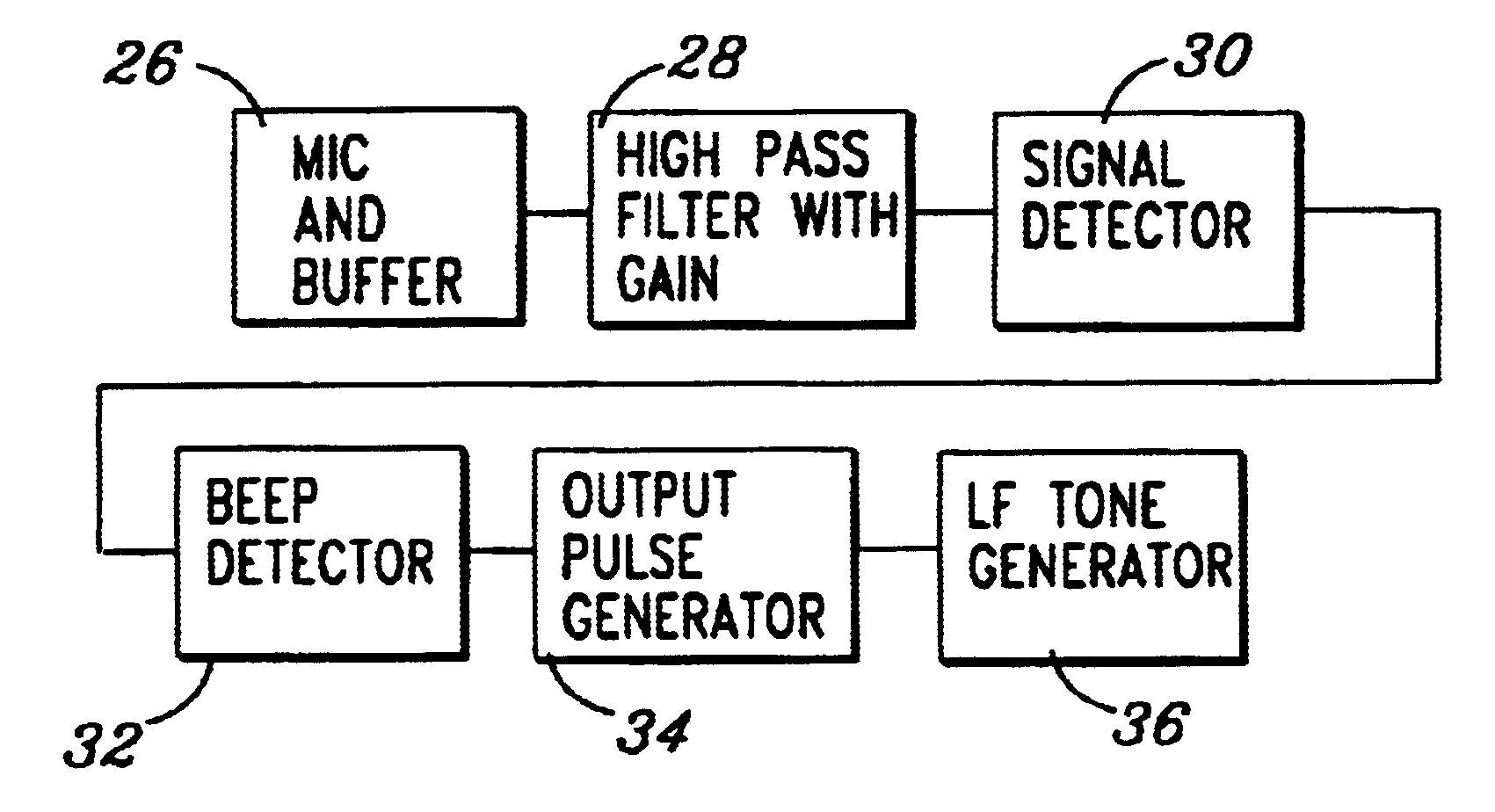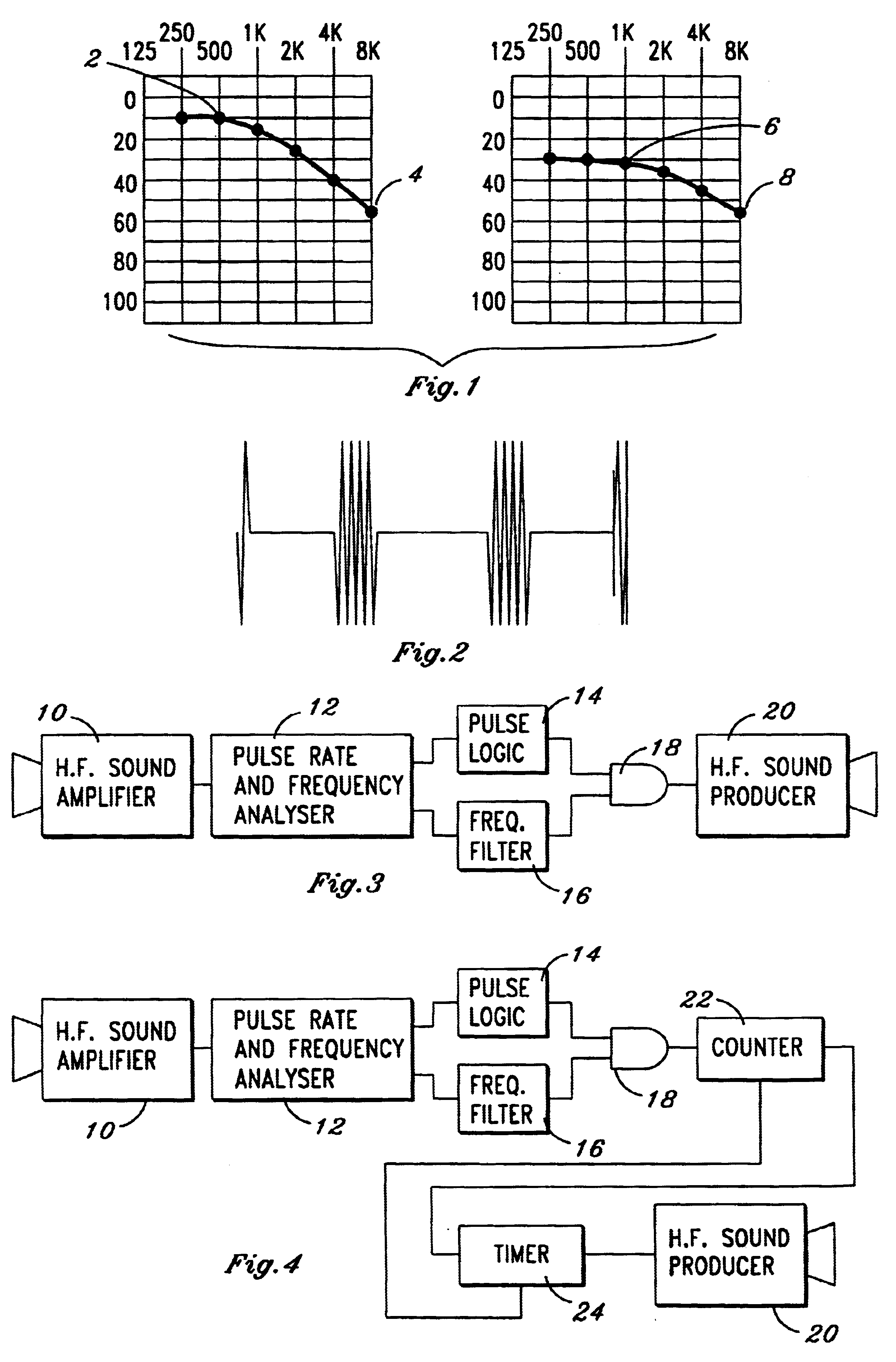Sonic relay for the high frequency hearing impaired
a high-frequency hearing loss, sonic relay technology, applied in the direction of deaf-aid sets, instruments, electrical equipment, etc., can solve the problems of large population, especially older people, hearing impaired, and high-frequency periodic beeps that cannot be heard by people with high-frequency hearing loss
- Summary
- Abstract
- Description
- Claims
- Application Information
AI Technical Summary
Problems solved by technology
Method used
Image
Examples
first embodiment
In accordance with a first embodiment of the present invention, FIG. 3 shows a simplified block diagram of a sonic relay which is adapted to receive a high frequency sound comprising sonic pulses or beeps of the type described in FIG. 2. All of the separate components pictured in the blocks are conventional and within the design knowledge of one skilled in the art. The sound signals are amplified in high frequency (H.F.) sound amplifier 10, which supplies an amplified electrical signal to pulse rate and frequency analyzer 12. There, the pulse envelope and high frequency parts are separated by filtering techniques well known to those skilled in the art and described and referenced in the aforementioned Stockham patent 5,500,902, which is incorporated herein by reference. The pulse envelope is converted to a square wave signal and fed to pulse logic block 14. Logic block 14 is designed to test the pulse repetition rate or duty cycle of the square wave and to provide output logic level...
second embodiment
FIG. 5 is a system block diagram for a second embodiment of the invention. Rather than combining first and second logic signals in an AND circuit, the signals are processed in series to first determine if the audio input signals are high frequency sonic pulses, and then to analyse in a logic circuit whether they are beeps occuring at a constant repetition rate having the requisite periodicity. FIG. 5 shows the signal flow from audio input to audio output of the sonic relay. Audio signals are received at a microphone and buffer 26. The signals include periodically occurring sonic beeps at a frequency which is within the upper range of human hearing, but inaudible to a person with frequency impaired hearing. The buffer isolates the microphone from the circuit and adds appropriate gain. A high pass filter 28 removes low frequency components from the signals. A band pass filter may be used in lieu of high pass filter 28 to also remove extraneous very high frequency noises, such as click...
PUM
 Login to View More
Login to View More Abstract
Description
Claims
Application Information
 Login to View More
Login to View More - R&D
- Intellectual Property
- Life Sciences
- Materials
- Tech Scout
- Unparalleled Data Quality
- Higher Quality Content
- 60% Fewer Hallucinations
Browse by: Latest US Patents, China's latest patents, Technical Efficacy Thesaurus, Application Domain, Technology Topic, Popular Technical Reports.
© 2025 PatSnap. All rights reserved.Legal|Privacy policy|Modern Slavery Act Transparency Statement|Sitemap|About US| Contact US: help@patsnap.com



